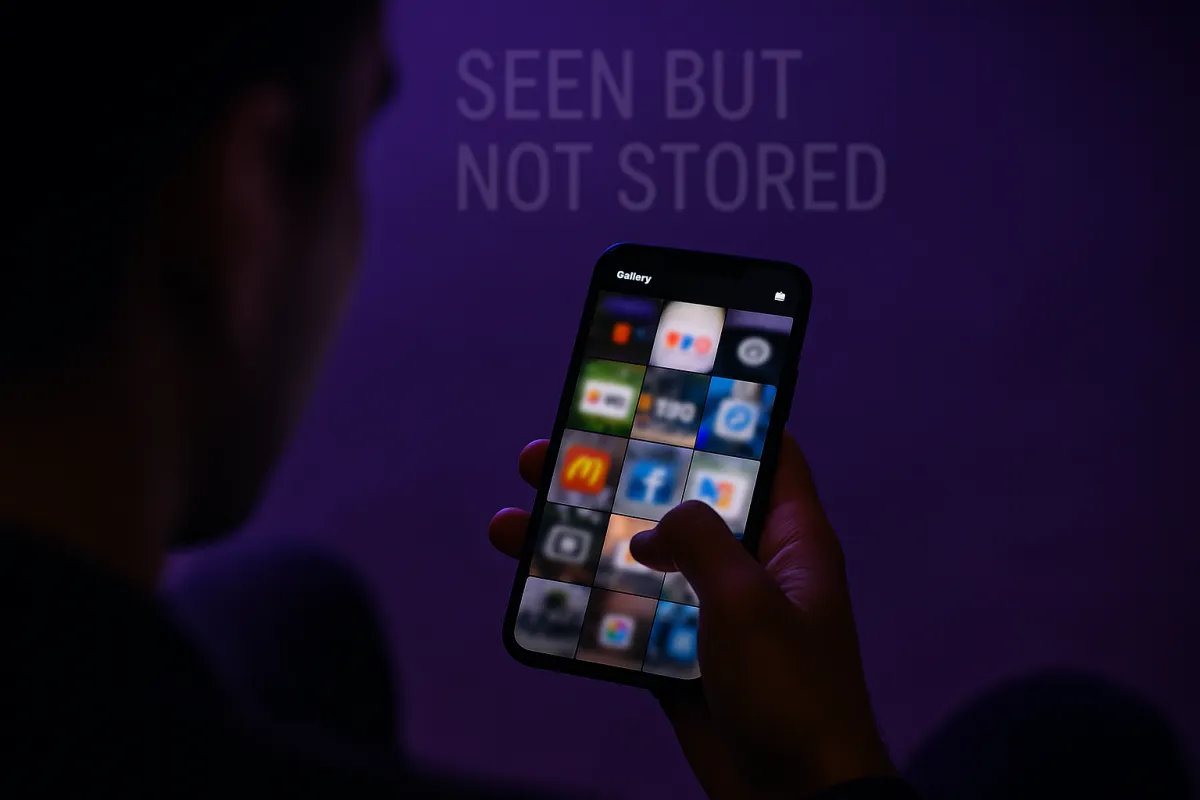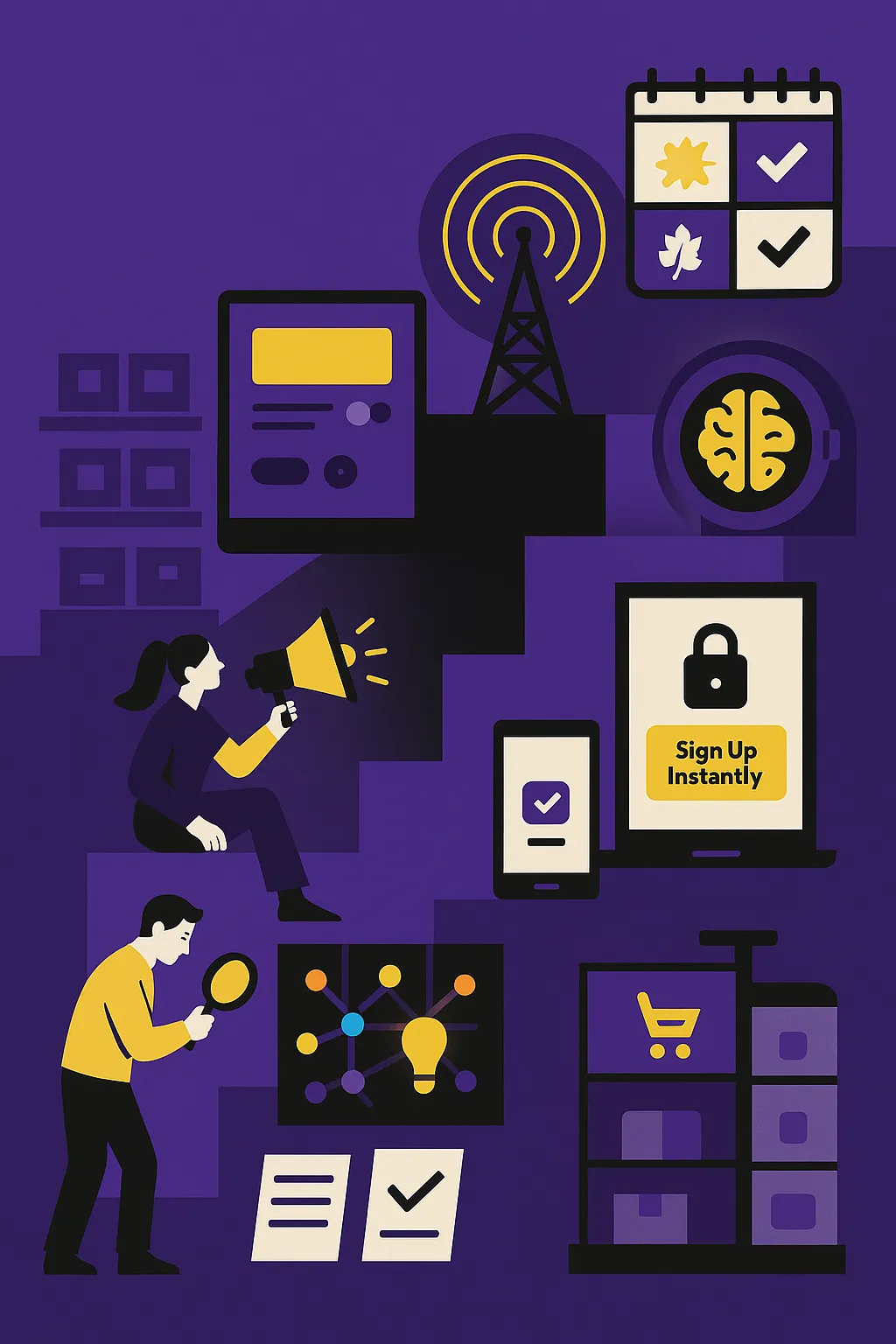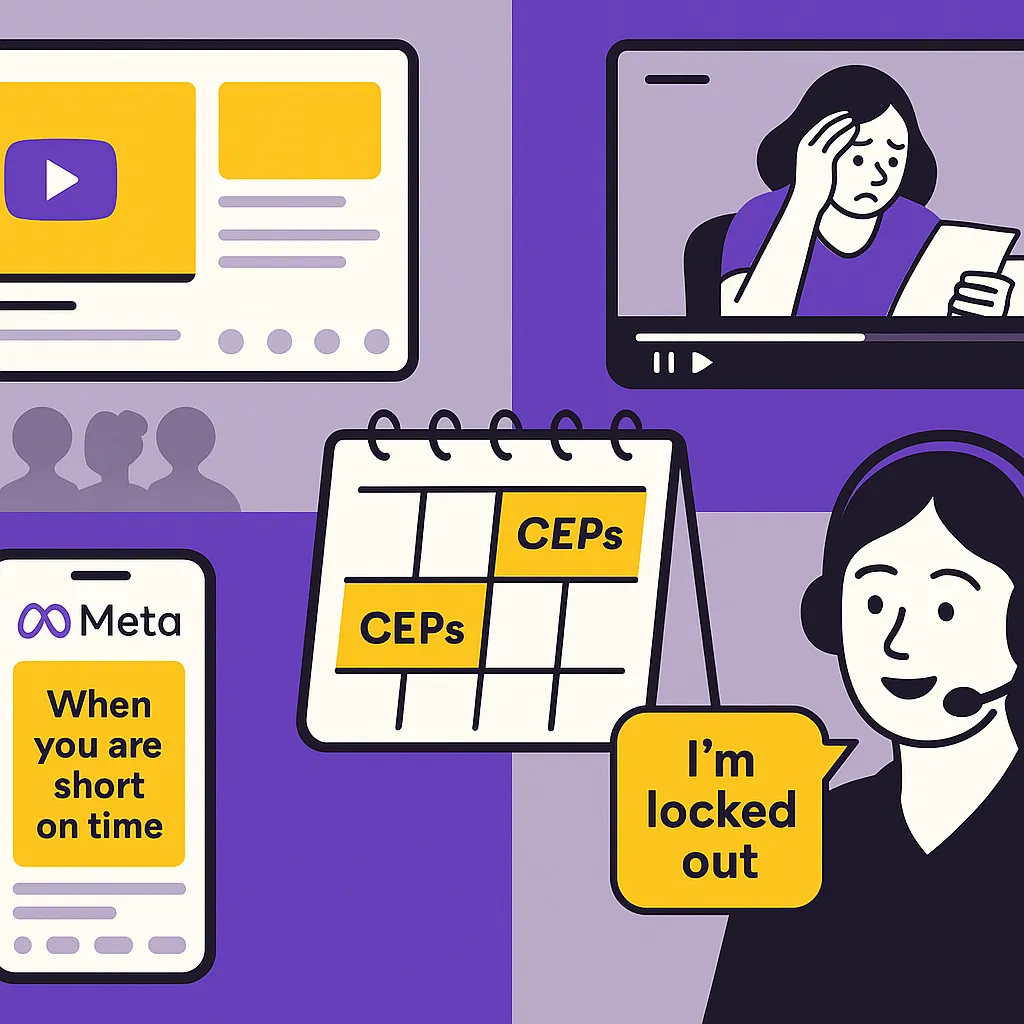By German Tirado, July 22, 2025
Table of Contents
Introduction
Evidence Snapshot
Why Buyers Forget — Five Scientific Reasons
Action Plan: From Invisible to Top-of-Mind
Case Study: Forgotten Locksmith to Local Hero
Metrics to Track
Conclusion
Frequently Asked Questions (FAQs)
Introduction

Scroll through your camera roll and count the last 50 photos—how many random brand logos appear that you barely registered? That is the typical cognitive fate of most marketing: fleeting exposure, zero imprint. Decades of buyer-behaviour research show the average consumer grants a brand only 7–10 fleeting seconds of mental attention per year, spread across many micro-moments [HBG1]. Within that sliver of brain time, your name must be encoded, stored, and retrievable weeks or months later when the need finally surfaces. Otherwise, you might as well have been invisible.
The Ehrenberg-Bass Institute defines this ease-of-recall as Mental Availability—the statistical likelihood that a buyer will notice, recognize, and recall your brand at a buying opportunity. Mental Availability is not built by persuasive copy or clever segmentation; it is built by forging and refreshing a dense web of Category Entry Points (CEPs). CEPs are the situational, emotional, and social cues that jolt people into category consideration: “locked out at 2 a.m.,” “flood of after-hours voice mails,” “quarter-end budget panic.” Each cue acts like a doorway in the consumer’s memory palace. Big brands dominate because they occupy more of these doorways; smaller brands suffer the Double Jeopardy penalty—fewer buyers and less loyalty—because they occupy too few [HBG2].
Compounding the challenge, 95 % of potential buyers are out of market today; they will scroll past your narrow retargeting ads and forget them within hours [95-5]. In that reality, sophisticated persona work or precision targeting cannot rescue you. Only systematic CEP linking—reinforced by broad-reach media and seamless distribution—ensures that “sleeping” buyers think of you the instant they awaken to a need. Whether you sell AI-driven internet marketing services or round-the-clock telephone answering services, mastering CEP science is the surest, evidence-backed path from obscurity to top-of-mind status. This guide unpacks why buyers forget and lays out a practical, research-grounded blueprint to make sure they don’t.
1. Evidence Snapshot

Up to 95% of category buyers are out-of-market today, so only memory can influence their future purchase [95-5].
Even category leaders rarely exceed 40% unaided recall when buyers are prompted with a need cue; smaller brands hover in single digits [HBG2].
Without repeat exposure, ad-built memory links decay by roughly 50% in six months [BDA].
In B2B insurance, every extra CEP association lowered churn by about 5% at renewal [CEP-B2B].
2. Five Scientific Reasons Buyers Forget
Cause
1. Weak Mental Availability
2. Narrow Cue Coverage
3. Message Over-Complexity
4. Thin Media Reach
5. Distribution Gaps
Supporting Law
Double Jeopardy
CEP research
“One-Second” Rule
Law of Buyer Moderation
Physical Availability
How It Shows Up
You reach fewer light buyers, so fewer people store your brand in memory.
Buyers link you to one situation (“tax time”) but not others (“mid-year audit panic”).
Branding appears late or is buried; viewers skip before the brand–cue link forms.
Heavy viewers see you often; the crucial mass of light viewers never see you.
Even if remembered, buyers abandon when your product isn’t easy to obtain.
3. Action Plan: From Invisible to Top-of-Mind

3.1 Audit Your CEP Footprint
Brain-storm 30-50 raw CEPs using the revised “W” list—When, Where, While, With/Instead-of What, With/For Whom, How Feeling, Why.
Survey 300-500 category buyers:
Incidence: “Have you faced [CEP] in the past 12 months?”
Linkage: “Which brand comes to mind first for that situation?”
Map findings on a 2×2: Incidence (x) vs. Brand Linkage (y). High-incidence & low-linkage cues = white-space growth opportunities [CEP-B2B].
3.2 Simplify and Distinctify Your Creative
One cue per execution. Clutter kills memory.
Brand fast, brand loud. Show logo, color block, or sonic sting in the first two seconds so skippers still encode the link [BDA].
Reuse distinctive assets consistently across display ads, YouTube bumpers, and even on-hold messages for your telephone answering services.
3.3 Buy Broad Reach, Not Tiny Targets
Allocate ≥ 70% of budget to the cheapest reach medium (often Meta reach campaigns, local TV, or radio).
Plan to deliver two exposures per buyer per year for each priority CEP—double that in fast-moving consumer goods [95-5].
Supplement with always-on SEO for high-volume “cue keywords” (e.g., “locksmith near me midnight,” “missed call service after hours”).
3.4 Close Distribution and Friction Gaps
Physical goods: Ensure stock in the top 90% of outlets and top e-commerce platforms.
Services: Offer instant sign-up, transparent pricing, and 24/7 chat. For example, Max Digital Edge’s telephone answering services integrate a “Start Your Free Trial” button on every high-traffic page.
3.5 Refresh Memory Relentlessly
Rotate CEPs quarterly: tax season, summer backlog, holiday rush.
Retest CEP reach annually; once linkage exceeds 50%, graduate the cue and scout new blanks.
Update assets—Google Business Profile Q&A, FAQ pages, YouTube preroll scripts—so each embeds the active CEP.
4. Practical Example: Forgotten Locksmith to Local Hero

A mid-tier locksmith relied solely on Google Ads for “fast response.” Survey revealed three high-incidence/low-linkage cues:
“Locked out at 2 a.m.”
“Moving house and need new keys.”
“Key snaps in the ignition.”
Fix: Radio spots paired each cue with the brand’s red-van visual and a three-note sonic sting. Geo-fenced Facebook reach ads echoed the same assets. Local hardware stores stocked branded key-cut kiosks (distribution). Result: aided recall on the three CEPs doubled in nine months; job calls rose 48%, with 60% coming organically rather than via paid search. Gross margin widened because memory replaced last-minute bidding wars.
5. Metrics to Track
KPI
CEP Reach (% of buyers linking brand to cue)
Avg. CEPs per Buyer
Unaided Awareness
Penetration
Physical Availability Score (outlets, sign-up steps, service hours)
Target
+3 pp/yr
+0.2/yr
+2 pp/yr
Exceed category growth
≥ 90 % of category norms
Data Source
Annual survey
Same survey
Omnibus tracking
Panel data / CRM
Retail & UX audit
Why It Matters
Direct Mental Availability read-out
Wider memory = future sales
Early-warning indicator
Ultimate proof
Ensures recall converts
6. Frequently Asked Questions
Q1. Can small local businesses afford CEP surveys?
Yes. You can field a 10-minute online study for <$1 000, or use free polls on social media for directional insight.
Q2. Do CEP tactics work for B2B tech or SaaS?
Absolutely. Cues like “My CRM keeps crashing” or “budget reset in Q4” are measurable and actionable [CEP-B2B].
Q3. How long before I see sales impact?
Expect recall lifts in 3–6 months and penetration gains inside 12–18 months, assuming sufficient reach [HBG1].
7. Conclusion
Brands fade from memory for predictable, scientific reasons—and that means the path back to salience is equally predictable. Buyers forget you because (1) you are linked to too few Category Entry Points, (2) you under-reach light category buyers, (3) your creative hides the brand–cue link behind clutter, and (4) even when remembered, you are hard to buy. Each of those gaps has an evidence-based fix.
Expand CEP Coverage. Map the full spectrum of When, Where, While, With/Instead-of-What, With/For Whom, How Feeling, Why cues, then steal white-space moments by pairing one cue with one distinctive asset per execution [CEP-B2B].
Reach the Whole Market. Shift budget from micro-targets to the cheapest broad-reach channel so every light buyer sees your brand–cue pairing at least twice a year [95-5].
Brand Fast, Brand Loud. Flash color blocks, sonic stings, or shapes in the first two seconds; repetition, not rhetoric, forges memory [BDA].
Remove Friction. Stock hero SKUs in 90% of outlets, extend service hours, and streamline sign-up flows so recall converts to revenue [HBG2].
Track progress with CEP Reach, Average CEPs per Buyer, Unaided Awareness, Penetration, and Physical Availability scores. Expect recall lifts within six months and penetration gains inside 12-18 months when media weight is sufficient [HBG1].
Ignore these laws and you will keep shouting into the void. Apply them and even a modest brand can become the default answer to more buying moments—turning forgotten impressions into predictable growth. If you need a partner to run the surveys, craft the assets, and automate 24/7 availability, Max Digital Edge embeds Ehrenberg-Bass science into everything from AI-powered internet marketing services to after-hours telephone answering services. Because when salience meets availability, sales follow—empirically, repeatedly, inevitably [HBG1][HBG2][BDA][95-5][CEP-B2B].
Frequently Asked Questions
Q1. What are Category Entry Points (CEPs) in plain English?
CEPs are the real-world triggers—situations, emotions, places, or social contexts—that make people think about a product category. Examples: “locked out at 2 a.m.,” “missing a call from a potential client,” or “last-minute tax filing.” Your brand should be the first name buyers recall for as many of these triggers as possible [HBG1].
Q2. How do CEPs differ from customer personas or need-state segments?
Personas describe who buys; CEPs describe when and why a buying thought occurs. Personas help tailor messaging tone, but CEPs guide the memory links you must create so buyers think of you at the decisive moment [CEP-B2B].
Q3. How many CEPs should my brand target?
Big brands can be linked to 20 + cues, but most sales usually come from the top 5–10 high-incidence CEPs. Start by winning three to five white-space cues (high incidence, low current linkage) and expand once your survey shows ≥ 50% linkage on those initial targets [HBG2].
Q4. I run a local business—do I really need a CEP survey?
Yes. Even a 300-respondent online poll can reveal which “uh-oh” moments (e.g., “I lost my keys,” “overflowing toilet”) lack a clear local brand. Surveys can cost under US $1 000 and deliver actionable gaps to own.
Q5. How long will it take to see results from CEP-based marketing?
If you buy enough reach (≈ two impressions per priority CEP per buyer each year) you’ll typically see aided recall move within 3-6 months and penetration begin rising in 12–18 months [95-5].
Q6. Can CEP strategy work for B2B or SaaS companies?
Absolutely. Triggers like “end-of-quarter reporting panic” or “CRM keeps crashing” are just as measurable as consumer cues. In a B2B insurance study, each extra CEP association cut year-end churn by ~5% [CEP-B2B].
Q7. What role do distinctive assets play in fixing forgetfulness?
Distinctive assets—colors, shapes, sonic stings—act as memory “anchors.” Flashing one in the first two seconds of an ad cements the brand-cue link even if viewers skip or scroll away [BDA].
Q8. Besides advertising, where should I weave in CEPs?
Every touchpoint: website hero copy, Google Business Profile Q&As, outbound email subject lines, service-menu headings, even on-hold messages for your 24/7 telephone answering services. Consistency across channels speeds up link formation and stops memory decay.
Q9. How do I measure progress beyond surveys?
Track changes in unaided brand awareness, penetration, share of search for cue-based keywords (e.g., “emergency locksmith midnight”), and a Physical Availability Score covering distribution breadth and service hours. Together they prove that stronger memory is translating into sales [HBG1].
Works cited
Full Reference
[HBG1] Sharp, Byron. How Brands Grow: What Marketers Don’t Know. Oxford University Press, 2010.
[HBG2] Romaniuk, Jenni, and Byron Sharp. How Brands Grow: Part 2 – Emerging Markets, Services, Durables, New Brands & Luxury. Oxford University Press, 2016.
[BDA] Romaniuk, Jenni. Building Distinctive Assets: A Practical Guide to Elevating Brand Identity. Oxford University Press, 2023.
[95-5] Dawes, John, and Jenni Romaniuk. Advertising Effectiveness & the 95-5 Rule: Most B2B Buyers Are Not in the Market Right Now. Ehrenberg-Bass Institute for Marketing Science & LinkedIn B2B Institute, 2022.
[CEP-B2B] Romaniuk, Jenni, John Dawes, and Byron Sharp. Category Entry Points in a Business-to-Business (B2B) World. Ehrenberg-Bass Institute for Marketing Science, 2023.
Address
Phone: 725-240-6870
Email : [email protected]
Address : 6440 Sky Pointe Dr. #140-341 Las Vegas, NV 89131
Artificial Intelligence
Marketing & Branding
Marketing & Branding
©2025 Max Digital Edge | All Rights Reserved
